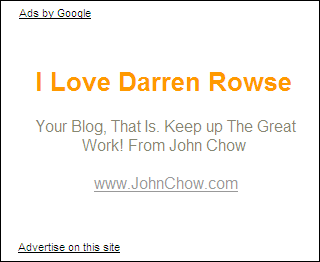I’m often asked why I no longer run Google AdSense on my blog. While my blog started with Google AdSense, and I have an entire chapter dedicated to it in my free eBook, you won’t find any AdSense on this blog anymore, unless you’re doing a search. In no particular order, here are the reasons I removed Google AdSense and why you might want to do the same.
I Make More Money Selling My Own Advertising
The CPC rate for AdSense ads has been slipping ever since Google released the ad service. Most readers have gotten used to it and no longer click the ads. I make far more money selling the ad space myself than by having Google sell it for me. Moreover, by doing my own ad sales, I get to keep all the money instead of having to split it with Google.
Normally, selling your own advertising means more work and less time to blog. To help fix that problem, I automate as much of my ad sales system as possible using OIOPublisher Direct.
OIOpublisher Direct is a WordPress Plugin that automates the ad buying process so you can concentrate on blogging instead of selling. With OIOpublisher direct, advertisers can order, pay for and upload their ads directly to your blog. The only thing you have to do is approve the ad. The script can be installed on an unlimited number of domains and also works with PayPal subscription.
You want to blog, you don’t want to sell ads. Let OIOpubliser Direct do the selling for you. The plugin cost $47 and it’s worth every penny. You should make it all back and more with your first sale.
Very Little Editorial Control
Google has over 100,000 advertisers and you have almost no control over which one can and can not advertise on your blog. You are allowed to upload an exclude list of 200 URLs that you don’t want to show up but that’s about it in terms of editorial control.
Targeting Can Be Way Off
The algorithm that matches the ads to your blog content doesn’t alway work. Most of the time, it does a fair job but when it messes up, it can be very embarrassing. How do you think Iomega felt after seeing their ad on this story?

You think Folgers got their money’s worth by having their ad next to this news story?

As long as Google relies on an algorithm to match ads with content, glitches like the above are bound to happen. They’re embarrassing to the advertiser and to you as a blogger.
You Allow SiteMatch Advertisers a Cheap Way To Advertise
When I find a blog that offers private advertising, the first thing I do is check to see if they’re also running Google Ads. If they are, then I would use Google SiteMatch as a backdoor way to get my ads onto their blogs.
 SiteMatch allows you to target a single site instead of using keywords to determine where your ad shows up. SiteMatch rates are generally always cheaper than buying direct from the site. Google sets the SiteMatch price based on the eCPM of the CPC ads. Most of the time, I never have to bid more than $1 CPM to take over the entire inventory of the site I’m targeting.
SiteMatch allows you to target a single site instead of using keywords to determine where your ad shows up. SiteMatch rates are generally always cheaper than buying direct from the site. Google sets the SiteMatch price based on the eCPM of the CPC ads. Most of the time, I never have to bid more than $1 CPM to take over the entire inventory of the site I’m targeting.
I was able to use this trick to buy tons of ad space on Problogger.net before Darren Rowse wised up and removed AdSense from his blog. You can see the ad I ran on Problogger above. Pretty creative, huh?
If you’re offering direct advertising, do not run Google AdSense!
Google AdSense Make Readers Leave Your Site
This is the number one reason for removing Google AdSense. When readers click on the ad, they leave your blog (ads do not open in a new browser window). While Google does have some CPM ads, the majority of them are CPC based. That means in order to make money with AdSense, a reader must leave your site. When your blog is new and you’re trying to build a readership, the last thing you want is for a reader to leave.
Because AdSense ads are based on clicks, everyone tries to optimize them to increase the click rate and therefore, increase the number of people leaving. And for what? So you can make 25 cents? For a new blog, this is very short sighted thinking. You want to build a relationship with your readers by getting them to opt into your mailing list. You don’t want to send them away by clicking on a Google Ad.
Maximizing blog income is all about maximizing the lifetime revenue per reader. By building a relationship with a new reader instead of trying to get him to click on a Google Ad (and never seeing him again), you’ll grow your blog readership and will make far more money than a Google Ad can ever pay you.
